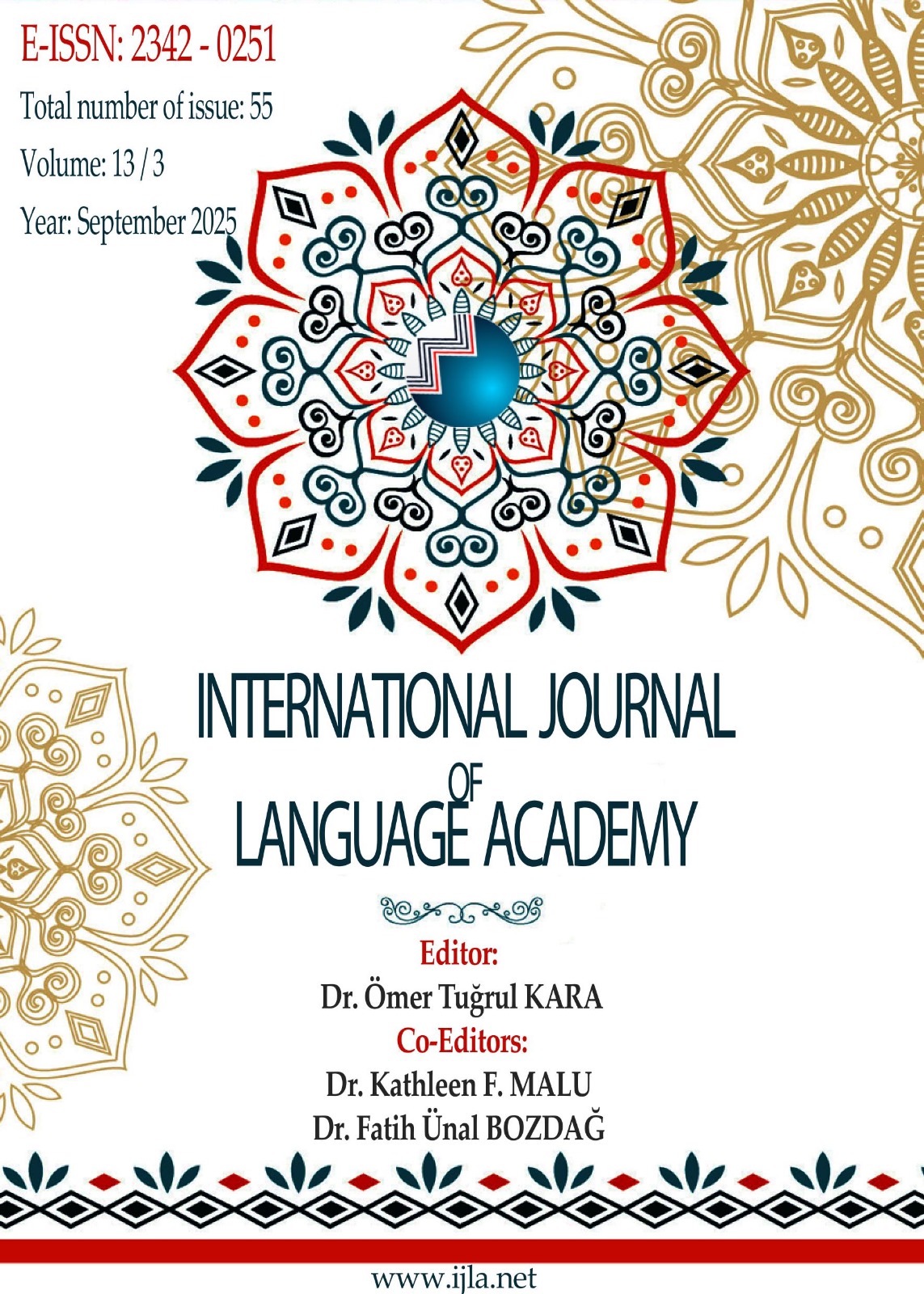Author :
Abstract
Bu araştırmanın temel amacı ortaokul 8. sınıf Türkçe ders kitabında yer alan metin altı soruların Barrett taksonomisi çerçevesinde değerlendirilmesidir. Bu doğrultuda, 2024-2025 eğitim-öğretim yılında Millî Eğitim Bakanlığı tarafından okutulmak üzere hazırlanan 8. sınıf Türkçe dersi kitabındaki metin altı soruları incelenmiştir. Araştırmada nitel araştırma yöntemlerinden biri olan doküman incelemesi yöntemi tercih edilmiştir. Doküman incelemesi, var olan yazılı materyallerin sistematik bir biçimde incelenmesini sağlayan etkili bir veri toplama yöntemidir ve bu bağlamda ders kitabındaki metin altı sorular, araştırmanın temel verilerini oluşturmuştur. Verilerin çözümlenmesinde nitel veri analiz yaklaşımlarından, betimsel analiz yöntemi kullanılmıştır. Bu analiz sürecinde, elde edilen veriler öncelikle anlamlı bir bütünlük içinde özetlenmiş, ardından Barrett taksonomisinin bilişsel basamakları dikkate alınarak sınıflandırılmıştır. Araştırma bulgularına göre, kitapta toplam 158 metin altı soruya yer verildiği ve bu soruların büyük bir çoğunluğunun Barrett taksonomisinin ilk basamağı olan “basit anlama” düzeyinde yer aldığı görülmüştür. Bu durum, metinlerin yüzeysel olarak anlaşılmasını hedefleyen, doğrudan metinden çıkarılabilen bilgileri ölçmeye yönelik soruların ağırlıkta olduğu; üst düzey düşünme becerilerini geliştirmeye yönelik olan “derinlemesine anlama”, “değerlendirme” ve “yeniden organize” gibi bilişsel basamaklarda yer alan soruların sayıca sınırlı olduğu, bazı basamaklara ise hiç soru yöneltilmediği belirlenmiştir. Genel olarak, elde edilen bulgular Türkçe ders kitaplarında yer alan metin altı soruların büyük ölçüde düşük bilişsel düzeyde sorulardan oluştuğunu ve öğrencilerin üst düzey düşünme becerilerini geliştirmeye yönelik yeterli yönlendirme yapılmadığını ortaya koymaktadır.
Keywords
Abstract
The main aim of this study is to evaluate the post-reading questions in the 8th grade Turkish textbook within the framework of Barrett's taxonomy. In this context, the post-reading questions in the 8th grade Turkish textbook, prepared by the Ministry of National Education for the 2024–2025 academic year, were analyzed The study adopted the document analysis method, which is one of the qualitative research methods. Document analysis is an effective data collection method that enables the systematic examination of existing written materials, and in this context, the post-text questions in the textbook formed the main data source for the research. For data analysis, the descriptive analysis method—one of the qualitative data analysis approaches—was used. In this process, the collected data were first summarized within a meaningful framework and then classified according to the cognitive levels defined in Barrett’s taxonomy. According to the findings of the research, a total of 158 post-text questions were identified in the textbook, and the vast majority of these questions were found to be at the first level of Barrett’s Taxonomy, which is “literal comprehension.” This indicates that the questions mainly focus on assessing surface-level understanding and information directly retrievable from the text. In contrast, questions aiming to foster higher-order thinking skills—such as those classified under “inferential comprehension,” “evaluation,” and “reorganization”—were limited in number, and some levels were found to have no questions at all. Overall, the findings reveal that the post-text questions in the Turkish textbooks largely consist of questions at lower cognitive levels and that there is insufficient guidance to support the development of students’ higher-order thinking skills.





